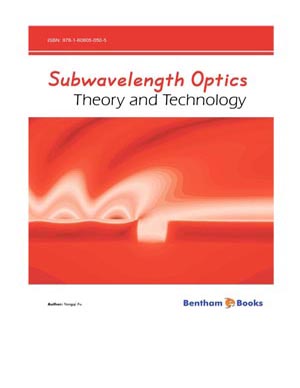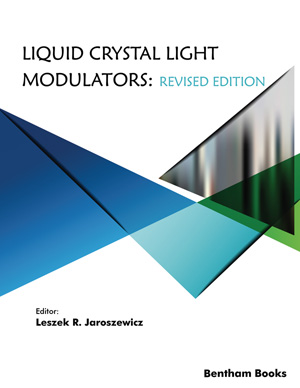Abstract
Yongqi Fu was born in Lanzhou, P.R. China. He received his B. Eng, M.S(Eng), and Ph.D from Jilin University, Changchun University of Science and Technology, and the Changchun Institute of Optics, Fine Mechanics and Physics, Chinese Academy of Sciences in 1988, 1994, and 1996, respectively. Then he worked at State Key Laboratory of Applied Optics, Chinese Academy of Sciences from 1996 to 1998 as a Postdoctoral Fellow. Next, he worked at Precision Engineering and Nanotechnology (PEN) Center, School of Mechanical and Aerospace Engineering, Nanyang Technological University, Singapore, and Singapore-MIT Alliance as a Research Fellow and Senior Research Fellow respectively from Aug. 1998 to Jun. 2007. He is a leader of FIB group at PEN Center. After that, he worked at State Key Laboratory of Optical Technology for Microfabrication, Institute of Optics and Electronics, Chinese Academy of Sciences as professor under “BAIREN Program”. Currently, he works at School of Physical Electronics, University of Electronic Science and Technology of China as professor in nanophotonics and subwavelength optics. His current research interests include micro/nanofabrication, applications of FIB in microelectronics/ semiconductors, nano-photonics, biosensing, SPR/LSPR-based immunoassay, MOEMS/NEMS, micro/nano-optics, photonic crystals, optical measurement/nanometrology, and optical system instrumentation (e.g. nano-inspection/detection system). He authored and co-authored more than 130 peer reviewed journal papers with h-index of 13 generated from SCI citation database and 26 invited technical papers for symposiums and conference proceedings. In addition, he authored and coauthored three books and book chapters with titles of “Subwavelength Optics: Theory and Technology”, “Encyclopedia of Nanoscience and Nanotechnology”, and “Ion beams in Nanoscience and Technology”, respectively. Most recently, he was invited to be candidate of Associate Editor of Optics Express. He is referee of 12 journals such as Applied Physics Letters, Journal of Optical Society of America A/B, IEEE Photonic Technology Letters, and Journal of Vacuum Science and Technology B.
Abstract
Full text available
Abstract
From beginning of this century, there has been a dramatic increase in interest in the study of surface plasmon polaritons-based metallic subwavelength structures and learning. This is a refreshing concise book on issues and considerations in designing, nanofabrication and characterization of subwavelength plasmonic structures as well as their applications in imaging, superfocusing, semiconductor lasers, data storage, optical communications, biosensing, and immunoassay. This book can serve as a textbook for education and training as well as a reference book that aids research and development in those areas such as integrating light, photonics, nanotechnology, semiconductor, chemistry, and biology. Another aim of the book is to stimulate the interest of researchers, engineers, and businessmen to foster collaboration through multidisciplinary programs in this frontier science, leading to development and transition of the resulting technology. Both basic and applied aspects were presented in this book. Many illustrative worked-out examples and instructive exercises were given.
Abstract
A brief historic evolution and literature review of subwavelength optics was given. Then some descriptions were presented for multidisciplinary education, training, and research. Finally, scope of this book and brief contents for each chapter were introduced in this chapter.
MAXWELL EQUATIONS AND ELECTROMAGNETIC WAVE PROPAGATION
Page: 6-19 (14)
Author: Yongqi Fu
DOI: 10.2174/978160805050510901010006
PDF Price: $30
Abstract
Basic theory, electromagnetic field, and surface plasmons, were described briefly in this chapter. Maxwell equations and electromagnetic wave propagation were illustrated. Finally, metal optics and surface plasmon poloritons excitation were presented. They are essential issues for the theory of plasmonics and Nanophotonics.
ANALYSIS APPROACHES AND ALGORITHMS FOR PLASMONIC STRUCTURES
Page: 20-32 (13)
Author: Yongqi Fu
DOI: 10.2174/978160805050510901010020
PDF Price: $30
Abstract
Firstly, several stationary analyzing approaches: rigorous coupling wave analysis/Fourior model method, Mie theory, multiple multipole program, and discrete dipole approximation were presented. Then dynamic analyzing approaches: finite difference and time domain, and beam propagation method were described briefly in this chapter. Both the stationary and dynamic analyzing approaches were presented by theoretical description in respect of wave propagation through the subwavelength metallic structures.
NEAR-FIELD SCANNING OPTICAL MICROSCOPE AND APPLICATIONS
Page: 33-43 (11)
Author: Yongqi Fu
DOI: 10.2174/978160805050510901010033
PDF Price: $30
Abstract
Literature review of near-field scanning optical microscopy was given firstly. Then introduction of the near-field probing and corresponding systems were presented in detail. Finally, some typical applications of the near-field probing systems in different areas were described briefly combining with some concrete examples.
METAMATERIALS
Page: 44-55 (12)
Author: Yongqi Fu
DOI: 10.2174/978160805050510901010044
PDF Price: $30
Abstract
Aim of this chapter is that readers can obtain an outline about metamaterials from concept to principle after reading. Concept introduction of negative refraction index was given firstly, including literature review, history regarding the negative refraction index, and illustration of energy and momentum in negative refractive index materials. Then three types of metamaterials: electronic metamaterials, magnetic metamaterials, and double negative-index metamaterials were described in this chapter.
TOP-DOWN APPROACHES
Page: 56-67 (12)
Author: Yongqi Fu
DOI: 10.2174/978160805050510901010056
PDF Price: $30
Abstract
Many nanofabrication techniques were reported in books and journals at present. In this chapter, we targeted two commonly used approaches for fabrication of subwavelength metallic structures: focused ion beam (FIB) technology and laser interference photolithography. The former can realized fine nanofabrication over a local tiny area in one-step only. But it is a technique with high expenditure and small localized fabrication area. The latter can realize large area fabrication and cost effective. But it needs pattern transformation from photoresist into substrate. Some fabrication examples were presented. Problems existing in the fabrication processes were addressed as well.
BOTTOM-UP APPROACHES
Page: 68-74 (7)
Author: Yongqi Fu
DOI: 10.2174/978160805050510901010068
PDF Price: $30
Abstract
Two commonly used approaches for fabrication of plasmonic nanostructures: self assembled monolayer and electrochemistry techniques were introduced. The bottom-up approach has advantages of cost effective, large area fabrication, and simple process. But it is chemistry-based process, and thus has shortages of low repeatability, unstable, and low uniformity. It is suitable for fabrication of micro-/nanostructures which can be used as biosensors in life science.
CHARACTERIZATIONS
Page: 75-89 (15)
Author: Yongqi Fu
DOI: 10.2174/978160805050510901010075
PDF Price: $30
Abstract
Approaches for characterization of plasmonic structures were presented in this chapter. Firstly, scanning probing microscopy-based geometrical method was introduced. Probing problems for the commercial probes were addressed. Then we gave a major part for illustration of optical characterization of the plasmonic structures, including near-field scanning optical microscope, Raman spectroscopy, confocal microscopy, and multiphoton microscopy.
NANOHOLES ARRAY AND APPLICATIONS
Page: 90-100 (11)
Author: Yongqi Fu
DOI: 10.2174/978160805050510901010090
PDF Price: $30
Abstract
One of important types of plasmonic structures, nanoholes array was highlighted and presented in this chapter. Firstly, optical transmission properties of the nanoholes were introduced. Then polarization effect of elliptical nanoholes array was highlighted. Finally, one typical application of the nanohole array embedded on biochips for cancer cell detection was described briefly.
PLASMONIC STRUCTURES FOR IMAGING AND SUPERFOCUSING
Page: 101-133 (33)
Author: Yongqi Fu
DOI: 10.2174/978160805050510901010101
PDF Price: $30
Abstract
Superlens for imaging was introduced firstly. Two types of the superlenses were presented: negative refraction-based perfect lens, and metamaterials-based silver superlens. After that, several plasomonic structures such as the subwavelength metallic structures with depth tuning and width tuning, variant periods metallic structures, and funnel-shaped array for beaming and superfocusing were illustrated. A recently developed light source, radial polarization illumination was cited as a new concept of polarization for illumination. Then the radial polarization illumination-based plasmonic structures for superlensing were described. Finally, a nanoplasmonic waveguide for nanofousing was described.
METALLIC NANOPARTICLES ARRAY FOR BIOSENSING
Page: 134-154 (21)
Author: Yongqi Fu
DOI: 10.2174/978160805050510901010134
PDF Price: $30
Abstract
Design considerations for the metallic nanoparticles for biosensing were introduced firstly. Then the commonly used nanofabrication approaches were presented. After that, one important application, localized surface plasmon polritons (LSPR)-based immunoassay using the nanoparticles array was illustrated. Finally, the LSPR-related photothermal therapy was briefly described.
Metallic nanoparticles array being used as sensors for biosensing is a major application of nanophotonic devices, especially for the localized surface plasmon resonant (LSPR) effect-based nano-biosensors. It is an important approach for immunoassay. Numerous biosamples can be detected by means of the LSPR-based nano-biosensors such as biotin,[1] amyloid-derived diffusible ligands,[2] and Staphylococcus aureus enterotoxin B etc.[3] It becomes appealing for biological researchers due to its advantages of portable, cost effective, light weight, small volume, and simple system in comparison to the conventional SPR system, e.g., Bicore system.
PLASMONIC LASERS
Page: 155-168 (14)
Author: Yongqi Fu
DOI: 10.2174/978160805050510901010155
PDF Price: $30
Abstract
Surface plasmon polaritons (SPP)-based subwavelength metallic structures for laser amplification, emission, and collimation were introduced in this chapter. The plasmonic structures here act as a type of microlens which is integrated together with the laser for beam shaping or collimation. Then one application of the plasmonic laser for ablation of Silicon substrate was described.
METAMATERIALS-BASED ANTENNAS
Page: 169-185 (17)
Author: Yongqi Fu
DOI: 10.2174/978160805050510901010169
PDF Price: $30
Abstract
As one of important applications of metamaterials, the metamaterials-based antennas were introduced in this chapter. Firstly, theoretical background regarding the antenna was given. Then two types plasmonic structures being used as antennas: electromagnetic band-gap (EBG) structures-based antenna and waveguide slit array antenna were presented. Some experimental results were demonstrated also. Some unique properties of the antennas were shown in terms of these results.
PLASMONIC STRUCTURES FOR DATA STORAGE
Page: 186-196 (11)
Author: Yongqi Fu
DOI: 10.2174/978160805050510901010186
PDF Price: $30
Abstract
Plasmonic structures for another novel application: data storage was presented in this chapter. Total three type structures: thermal assisted magnetic head, plasmonic lens array, metallic nanoparticles-based recording, and atomic force microscope configuration-based system were discussed. A shortcut for readers getting a quick view of the plasmonic structure-related data storage was provided through this chapter.
FUTURE TENDENCIES AND CHALLENGES
Page: 197-199 (3)
Author: Yongqi Fu
DOI: 10.2174/978160805050510901010197
PDF Price: $30
Abstract
This chapter briefly discusses future tendencies and challenging in the fields of metamaterials-based imaging, nanoholes array for biosensing and detection, metamaterials-based antenna for communications, nanophotonic devices-based optical nanocircuits for quantum computer, LSPR-based immunoassay for nano-biosensing, and nanometrology for real-time dynamic inspection/testing/measurement.
Abstract
Full text available
Introduction
From the beginning of this century, there has been a dramatic increase in interest in the study of surface plasmon polaritons-based metallic subwavelength structures and learning. This is a refreshing concise book on issues and considerations in designing, nanofabrication and characterization of subwavelength plasmonic structures as well as their applications in imaging, superfocusing, semiconductor lasers, data storage, optical communications, biosensing, and immunoassays. The book can serve as a textbook for education and training as well as a reference book that aids research and development in those areas integrating light, photonics, nanotechnology, semiconductors, chemistry, and biology. Another aim of the book is to stimulate the interest of researchers, engineers, and businessmen to foster collaboration through multidisciplinary programs in this frontier science, leading to development and transition of the resulting technology. Both basic and applied aspects are presented in this book. Many illustrative worked-out examples and instructive exercises are given, which should prove to be particularly useful.










